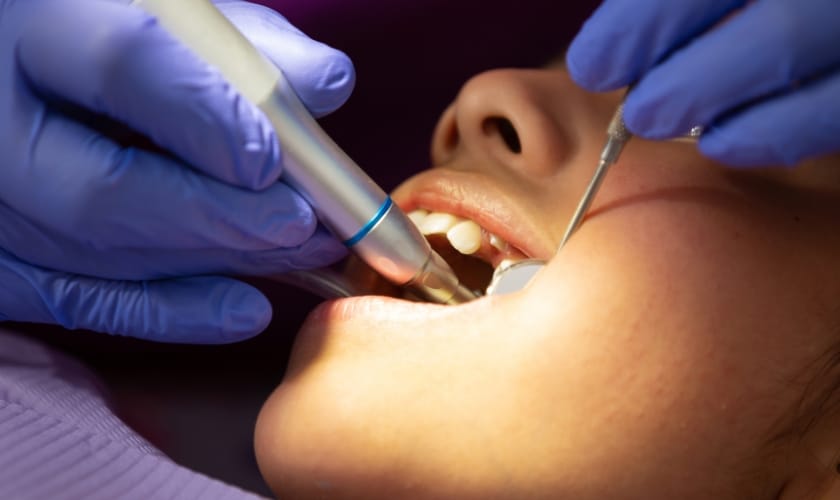Feeling relieved after having a troublesome tooth pulled out is understandable. However, sometimes after the extraction, you might encounter a complication known as a dry sockets. This condition is common and can cause significant discomfort if not properly managed. In this blog, we’ll discuss what a dry socket is, what causes it, and most importantly, how to prevent it from occurring and treat it effectively.
Understanding Dry Socket
When you have a tooth pulled out, it leaves a hole in the bone where the tooth was. Normally, after the extraction, a blood clot forms in this hole, protecting the bones and nerves as they heal. However, sometimes the clot can dislodge or fail to form properly, resulting in a condition known as a dry socket, or alveolar osteitis. This exposes the nerves and bone, leading to significant pain.
Causes of Dry Socket
Dry sockets can occur for various reasons, all of which can interfere with the healing process after a tooth extraction in Keller, TX. Understanding these reasons can help individuals take steps to reduce their risk of experiencing this painful condition. Here are the main causes of dry sockets:
- Poor Oral Hygiene: Failing to keep the extraction site clean can create a breeding ground for infections and complications. Inadequate oral hygiene increases the likelihood of developing a dry socket.
- Smoking or Tobacco Use: Tobacco products, such as cigarettes or chewing tobacco, hinder the body’s ability to heal. Smoking after a tooth extraction introduces harmful substances into the mouth, slows blood flow, and delays the formation of a protective blood clot, increasing the risk of dry sockets.
- Rough Tooth Removal: If the tooth is extracted too forcefully or aggressively, it can damage the surrounding tissues and disrupt the blood clot necessary for proper healing.
- History of Dry Sockets: Individuals who have previously experienced dry sockets after tooth extractions are more susceptible to recurrence. This may indicate underlying factors that predispose them to this complication.
- Medications and Health Conditions: Certain medications, particularly those that affect blood clotting, can increase the likelihood of developing dry sockets.
- Bacterial Infection: Infection at the extraction site can interfere with the formation and stability of the blood clot, leading to dry sockets. Poor oral hygiene, a weakened immune system, or pre-existing dental infections can contribute to bacterial growth and subsequent complications.
Preventing Dry Socket
Preventing dry sockets after a tooth extraction in Keller, TX, is vital to avoid discomfort and inconvenience. By taking proactive steps and adhering to post-extraction care instructions, individuals can significantly reduce their risk of experiencing this issue.
- Follow Post-Extraction Care Instructions: Your dentist will provide specific instructions on how to care for the extraction site after the procedure. It’s essential to follow these guidelines meticulously, including practicing proper oral hygiene and taking any prescribed medications or mouth rinses.
- Avoid Smoking and Tobacco Products: Quitting smoking and abstaining from tobacco products is crucial for proper healing after tooth extraction. Nicotine and other harmful substances in tobacco can constrict blood vessels, impeding blood flow to the extraction site and hindering the formation of a healthy blood clot.
- Maintain Good Oral Hygiene: Keeping the mouth clean and free of debris is essential for preventing infection and promoting healing. Gently rinsing with a saltwater solution or the prescribed mouthwash can help reduce the risk of bacterial contamination at the extraction site.
- Limit Physical Activity: Refraining from strenuous physical activity immediately after tooth extraction is important to minimize the risk of dislodging the blood clot and causing a dry socket. Avoid heavy lifting or vigorous exercise for the first few days post-extraction to mitigate this risk.
Treatment Options
Treating a dry socket involves several steps to alleviate discomfort and promote healing:
- Socket Irrigation: The dentist will gently clean the extraction site to remove debris, food particles, and bacteria, creating a clean environment for healing and reducing the risk of infection.
- Medicated Dressings: A medicated dressing or packing material may be applied to the socket to relieve pain and aid healing. These dressings contain pain-relieving and antimicrobial agents to reduce discomfort and prevent infection while helping form a new blood clot.
- Pain Management: Over-the-counter pain relievers such as ibuprofen or acetaminophen can be used to manage pain and inflammation. Stronger pain medication may be prescribed for severe discomfort.
- Antibiotics: If there’s an infection or risk of bacterial growth, antibiotics may be prescribed to control the infection and prevent complications. It’s essential to complete the entire antibiotic course as prescribed.
- Anti-inflammatory Medications: These medications can help reduce swelling and inflammation around the extraction site, easing discomfort and speeding up healing.
While dry sockets are preventable with proper care, seeking professional treatment is essential if one occurs. Following your dentist’s advice and maintaining good oral hygiene can minimize the risk of complications after tooth extraction. Remember, your dental health is crucial, so don’t hesitate to seek help if needed to ensure a smooth recovery.





